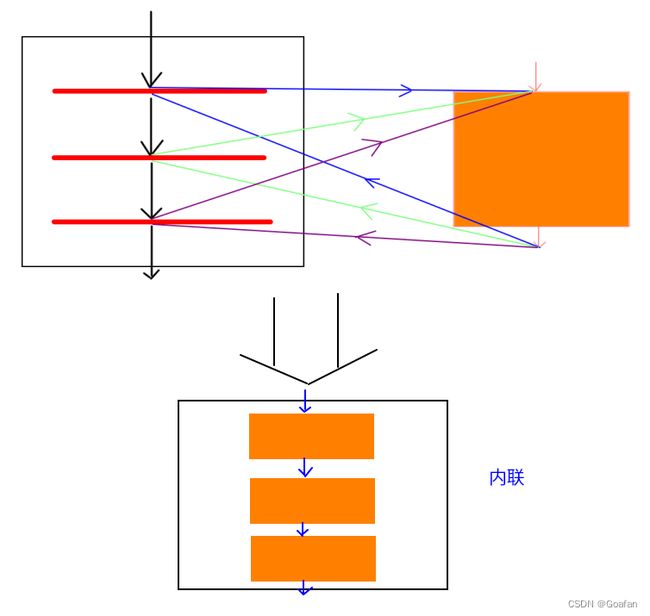C++04缺省参数、哑元、内联函数、动态内存分配
前言:更多内容请看总纲《嵌入式C/C++学习路》
1. 缺省参数
- 可以为函数的参数指定缺省值,调用该函数时若未指定实参,则与该实参相对应的形参取缺省值
- 函数参数的缺省值只能在函数声明中指定(编译器只看声明,不看定义)
- 如果函数的某一个参数具有缺省值,那么该参数后面的所有参数必须都具有缺省值
- 不要因为使用缺省参数而导致重载歧义
#include 2. 哑元
- 只指定类型而不指定名称的函数参数,我们称为哑元
- ——保证函数的向下兼容
- ——形成函数的重载版本
#include3. 内联
- 内联就是用函数已被编译好的二进制代码,替换对该函数的调用指令
- 内联在保证函数特性的同时,避免了函数调用开销
- 注意内联与有参宏(宏函数)的区别
- 内联会使可执行文件的体积和进程代码的内存变大,因此只有频繁调用的简单函数才适合内联
- 若函数在类声明中直接定义,则自动被优化为内联,否则可在其声明处加上inline关键字
- inline关键字仅表示期望该函数被优化为内联,但是否适合内力那则完全由编译器决定
- 稀少被调用的复杂函数和递归函数都不适合内联
4. 动态内存分配
- 继续使用标准C库函数malloc/calloc/realloc/free
- 使用new/delete操作符在堆中分配/释放内存
int pi = new int;
delete pi;
- 在分配内存的同时初始化
int *pi = new int (100);
- 以数组方式new的也要以数组方式delete
int *pi = new int[ 4 ]{1,2};
delete[] pi;
#include - 通过new操作符分配N维数组,返回N-1维数组指针
int (*prow)[4] = new int [3][4]; // 二维数组的首地址是一维数组
int (*ppage)[4][5] = new int [3][4][5]; // 三维数组的首地址是二维
- 不能通过delete操作符释放已释放过的内存
- delete野指针后果未定义,delete空指针安全,即 p = NULL;
- 内存分配失败,new操作符抛出bad_alloc异常
- 定位分配:
new(指针)类型(初值);
在一个已分配的内存空间中创建对象
#include #include 




